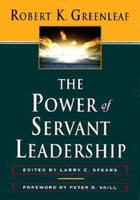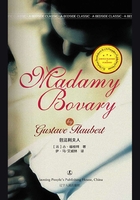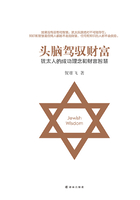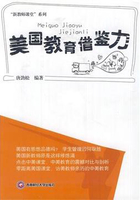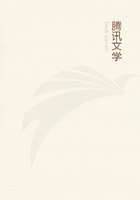EDITOR'S INTRODUCTION
On August 5, 1905, the noted Dutch Calvinist leader Abraham Kuyper embarked upon a great trek around the Mediterranean Sea. By the time it was over, he had visited more than eighty sites and cities across (on our map) some twenty different countries. Back home for good in June 1906, he proceeded to write up his impressions and reflections on all he had seen. The result was equal to the journey: a massive two-volume work, beautifully bound, printed, and illustrated, and entitled Om de Oude Wereldzee-Around the Old World-Sea.[1]
His trip fulfilled a lifetime dream; Kuyper could finally visit the lands of the Bible and Greco-Roman antiquity in whose literature and heritage he had been so thoroughly schooled. But he also came in touch for the first time with Muslims-in a wide variety of roles, settings, ethnicities, and ritual practices. The book before you collects the parts of Kuyper's work that record these many encounters, as well as his reflections on Islam as a whole. It aims to show how an outstanding thinker from a century ago spoke to a now-pressing issue in our own age: how Christians ought to regard Islam and its many adherents in all their variety.
KUYPER'S TRIP
Kuyper brought to his observations the prejudices and preconceptions of his age, plus some fixed mental habits of his own. At the same time he was well prepared to engage his subjects. On the one hand, he was seeing things for the first time, and we can watch him pushing back against various stereotypes with eyewitness accounts and data collected in the field. On the other hand, he had behind him a sterling education and a lifetime of leadership in church, state, and academia. In all three domains, furthermore, he had worked simultaneously as an organizer, an activist, and a theoretician. In short, Kuyper was something of a Renaissance man, and on his trip he pressed his nose and eyes into everything: theology and political administration, family life and worship practices, universities and elementary schools, the arts and architecture. Religion ran through them all as a unifying thread. Thus Kuyper examines Islam in its universally accepted core teachings but also across its rival schools of legal interpretation, political contentions, mystical orders, rituals, as well as the course of historical development that lay behind them all. He probes this faith in its social relations, aesthetic principles, gender arrangements, and cultural patterns. He notices furthermore how these are refracted across different ethnic lines, including Turkish, Arab, Persian, and Berber. What we read in the pages below, in sum, amounts to a wide-ranging travelogue through the world of Islam as it existed a hundred years ago, told from a consciously Calvinist and sometimes unconsciously Northern European point of view.
To help understand Kuyper's journey, the present volume includes two essays that detail different aspects of its context. Douglas Howard, an Ottoman specialist, surveys the political and economic conditions of the western Islamic world at the dawn of the twentieth century. George Harinck, an eminent Dutch scholar of Kuyper's neo-Calvinist tradition, analyzes the major role that the colonial Dutch East Indies plays in Kuyper's writing. A third essay, by Diane Obenchain, a scholar of religion in intercultural context, offers some suggestions for how Kuyper's commentary might inform our approach to Christian-Muslim relations today. To this background we can add a little more detail about Kuyper's personal situation as he undertook his trip.
Put briefly, this sixty-seven-year-old veteran of many battles in church and state had just endured one of the most grueling episodes of his life.[2] In June 1905 the Netherlands held its regular quadrennial elections, with Kuyper running for re-election as prime minister. He had seen success on major points of his educational agenda in his first term, and he dearly wanted a second to push through his program of social reforms. The campaign was one of the bitterest in Dutch history. Kuyper's record and future intentions were savaged by the country's classical liberals because of his educational reforms and by the upstart socialists over his suppression of a general strike two years before. Kuyper fought back hard but, in the end, did not prevail; though his party coalition won the popular vote, the vagaries of electoral districting left it short of a Parliamentary majority. Kuyper was out, and his opponents gleefully shouted the news in the streets just as he plunged into mourning in seclusion. He then violated protocol by leaving town before the next government was installed. If his country did not want him, he would visit more interesting places.
The first month of his tour, August 1905, served as a prelude spent taking the waters at the renowned health spa of Bad Kissingen in Germany.[3] In September it was on to Munich, Innsbruck, and northern Italy for further recuperation. In mid-October Kuyper started his great circle proper, beginning in Romania. From there he moved into Russia. He hoped to visit the historic Orthodox center of Kiev but could get no further than the Crimea because of the 1905 Revolution that had erupted in the wake of Russia's defeat at the hands of Japan. Kuyper would give the latter considerable attention in his reflections. From Sebastopol he took ship for Constantinople, where the record in this volume begins. To date the rest of his itinerary briefly: Kuyper spent November 1905 in present-day Turkey, arrived in Beirut in early December, and passed the rest of that month exploring present-day Lebanon, Syria, and Israel-Palestine. January 1906 he traveled the Nile from Cairo to Khartoum and back. February and the first half of March he revisited classical antiquity in Greece and Italy. Islam came back into view when he alighted in Tunis on March 21, only there his plans were disrupted by an emergency call to return home, where his eldest daughter, Henri?tte, had taken ill. Once the crisis had passed, Kuyper returned to the Mediterranean by way of Spain, touring Morocco and Algeria from mid-April into May, followed by three weeks in southern Spain. The end of May found him in Portugal, but ten days of rising temperatures there proved enough. He returned to the Netherlands by way of Paris and Brussels and was back home in The Hague on June 16.
Kuyper would soon re-enter the political lists, but first he resumed his writing program. That included editing his daily newspaper and weekly church magazine, as he had done for thirty-five years; composing his travel narrative came on top of that. The project was nearly aborted when the cleaning lady tossed his materials into the trash, but he was happily able to rescue most of them from the city dump.[4] The writing then proceeded in Kuyper's usual methodical way. The first chapter was completed by the end of that November; volume II was finished nearly two years-and 1064 pages-later, on October 28, 1908. The next day he celebrated his 71st birthday. Meanwhile, in February 1908, his party enjoyed some political revenge in being returned to power, but for Kuyper the occasion was bittersweet. Younger men now ran things, and one of his acolytes-not he himself-was the new prime minister.[5]
RELIGIOUS THEMES
While his trip came at a crucial turn in Kuyper's career, it also called up some of his deepest theological convictions. Anyone who has read much of Kuyper and then turns to these pages will experience enough jolts of recognition to start wondering whether Kuyper was seeing Islam clearly or projecting his own ideals upon it. The answer probably lies in the resonance between the two. That raises interesting implications. Given Kuyper's conviction that Christianity was the one true religion, and Reformed Protestantism the best version of it, what does it mean that he found in Islam such strong resemblances to his own Calvinist program? He asserted repeatedly that Islam does not segment religion off as one sphere separate from the others; rather, the faith permeates everything-politics and culture, education and the arts, domestic life and public affairs-animated by a single driving conviction. Just that was his lifelong dream for Reformed Christianity. Kuyper envied Islam's freedom from the Modernist erosions in European Christianity. He admired its ecumenical unity across a vast diversity of ethnic, geographical, and historical contexts. He could have been repeating the main points of his old campaign for Dutch church reform when he described Islam as a religion of freedom par excellence, dependent on the commitment of the faithful and unthrottled by bureaucracy. His loving description of Fez could stand in for his dream for Amsterdam-organic architecture and street design, its university lending a learned tone to the whole, a city rich in its own culture instead of imitating European chic. He might even have been describing his own younger self-conception when he ascribed Muhammad's powerful leadership to a perfect conjuncture in him of religion, personality, and the historical moment under the command of an uncompromising monotheism. The latter most of all: Islam honored, said Kuyper, everywhere and at all times, the sovereignty of God. Kuyper's next massive theological commentary, the three-volume Pro Rege (1911-12), began with a rueful calculation of how many times per day, per week, per year all Muslims offered up their praise and prayers to Allah, and how far short of that mark even the most devout Christians fell.[6]
For all these similarities, Kuyper was not hesitant to elaborate upon the faults he sees in Islam. Its legalism does not satisfy the soul, and the mystical spirituality which fills that void is prone to ethical lapses and political "fanaticism." It treats women badly and suffers from the scourge of polygamy. Its sterling scholarship had long ago stagnated. It had never gotten over its cult of jihad, understood as holy war against infidels and triggering assaults against Christians in the neighborhood. Without trying to determine how fair this list might be, we can make four observations about it. First, Kuyper never did capture the essence of jihad as primarily a battle or quest within the self to purge all that is not of God/Allah.[7] Second, he periodically notes how the intrusion of European imperialism had exacerbated inter-religious conflict. Third, his picture of Islam is more nuanced in the chapters treating particular countries, where he is immersed in the local scene, than in the grand overview chapters which begin the two volumes of his original publication.[8] Finally, the very presence of nuance and counterpoint in Kuyper's presentation deserves emphasis. To him Islam has defects and virtues. It poses threats here and opportunities there. It brings to light both the merits and the defects of Christendom-and especially of Christians. It is, admirably, all of a piece in its core convictions but not all of a piece in its local articulations, and these invite-indeed, require-any outsiders, Christians included, to take historical, cultural, and political context seriously. That is a word to be heeded in our own tense and heated times.
CULTURE AND EMPIRES
Kuyper was traveling not just as a theologian and culture critic but as a prominent politician. He enjoyed the courtesies he received in that role at every port, especially in comparison to his recent defeat back home. He regularly notes the achievements or shortcomings of local governance, whether native or imperial. Native rule, he thought, too often suffered from lack of government initiative in promoting development. This opinion is at some variance with Kuyper's reputation as an advocate of "small government," but it reflects his recent responsibilities as prime minister at the end of a half century in which the Netherlands had taken remarkable strides in building up its technical, human, and social capital.[9] The state had provided significant leadership in these endeavors, with highly beneficial consequences. Kuyper's worries were about the government's ongoing micromanagement of and ideological bias in these efforts, not the efforts themselves. For their part, the European empires in the Mediterranean, particularly the British in Egypt and the French in the Maghreb, had begun similar efforts to good effect. Kuyper's pages show his fascination with the newly constructed railroads, telegraph lines, irrigation systems, and so on. But these achievements would be fleeting, he warned, unless they were deeply integrated into the culture of the country. He repeatedly faults the presumptions of technological determinism that he saw too many Europeans carrying into their colonies. He faulted even more their spiritual bearing, a combination of arrogance and emptiness. If Christianity were to gain traction in the rest of the world it would have to come by far more winsome witnesses than the agents of empire Europe had put in place. Kuyper joined the chorus that criticized infamous incidents like the Dinshawai episode in Egypt and wrong-headed systems like France's "civilizing mission" in North Africa. But imperialism via "peaceful penetration" he found just as flawed, perhaps more so for all its quieter working.
In this connection some of the most striking prose in all of Kuyper's writing occurs in his "Conclusion" to this work. Very ominously to our ears he takes up the notion of history being a contest for leadership between "Semitic" and "Aryan" peoples. Granted, this trope was common in his day; after Nazism it triggers alarm bells in our own. In precisely the opposite of the Nazi application, however, Kuyper calls for the productive interplay of the two legacies, not for the purgation of the one. Human life would reach its peak, he said, only by blending Semitic spirituality with Aryan intellect and technical craft. In that mix the Semitic-and that includes the Islamic-element would be the redeeming factor; the Nazi proposal to purge it instead spelled the formula for hell.
On this point and over his entire tour, religion for Kuyper remained the core of culture, and culture the heart of any people. He insisted that no lasting change occurred unless religion at least concurred. And even more often it was the lever and engine of change. That raises the question with which Kuyper opens his book: did Japan's recent victory over Russia foretell a "clash of civilizations" between Asia and the West, and if so would that come to a religious war between Christianity and Islam? Kuyper's ruminations sometimes seem to answer that question with a yes, sometimes with a no. His grand dialectics pitting "polytheistic" vs. "monotheistic" civilizations can seem strange to us and certainly underplay the importance of material forces in history. Even in the possible clash he envisioned, however, Islam was potentially an ally on the Christian side-indeed, the decisive weight, "worth gold." In that light Kuyper urges that Christian policy throw off the mentality of the Crusades and instead respect the virtues of the Islamic world, virtues which the West tended to sorely lack. Each side should honor the other's gifts and strengths and so come to a richer harmony and better balance, both between them and within themselves. But even if that happy outcome did not come about and Islamic militancy broke out against them, he adds, Christians should do everything in their power now to ensure that they could endure that assault with a clear conscience.
Some of Kuyper's forebodings proved accurate. The dangerous diplomatic game that France and Germany were playing over Morocco in the very year that he visited there helped trigger the catastrophe of World War I. He sketches out in a few sentences the developing lines of force in the Pacific that would converge in World War II. He did not see the dire results that would be brought about in our day by the British encouragement of Wahhabism in his time. But for our world, chronically gripped by the fear, and occasionally assaulted by the reality, of Islamic militancy, Kuyper's mode of grappling with the issue and his hopes for a workable conciliation between powerful religious forces offers a beacon for people who wish to take their faith very seriously and yet live at peace with their neighbors.
TECHNICAL NOTES AND ACKNOWLEDGEMENTS
This volume aims to be readily usable for present-day readers and therefore does not pretend to be a critical edition. Some of Kuyper's baroque, contrapuntal style has been smoothed out. His extremely long paragraphs and many of his sentences have also been broken up to aid comprehension. Names and spellings of persons, places, and technical religious terms have also often been updated to reflect current usage.
This volume was translated by Jan van Vliet. Excerpts were selected, edited, and annotated by James D. Bratt with the assistance of Douglas Howard. Kate van Liere provided crucial help in annotating chapter 9. Jordan Ballor and Melvin Flikkema served as general editors, and Joel Wilcox did the copy editing. Funds for this and other translated volumes in the Abraham Kuyper Collected Works in Public Theology have been generously provided by Rimmer de Vries, as well as other partners and supporters noted in the general editors' introduction.
James D. Bratt


